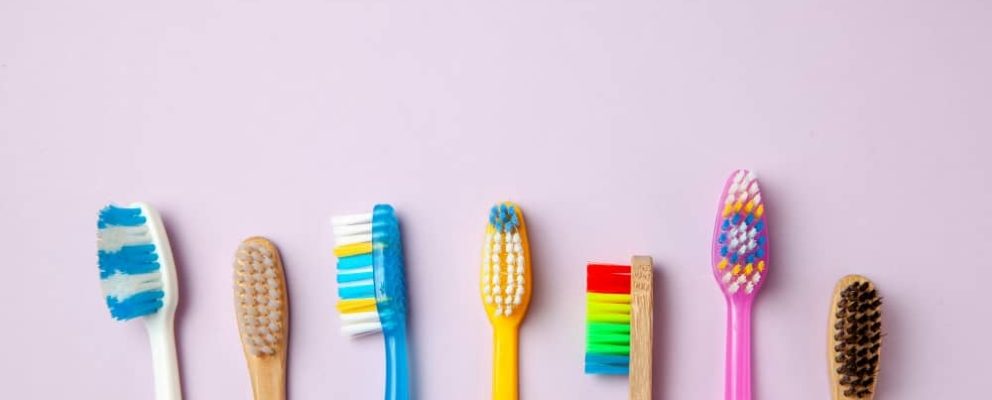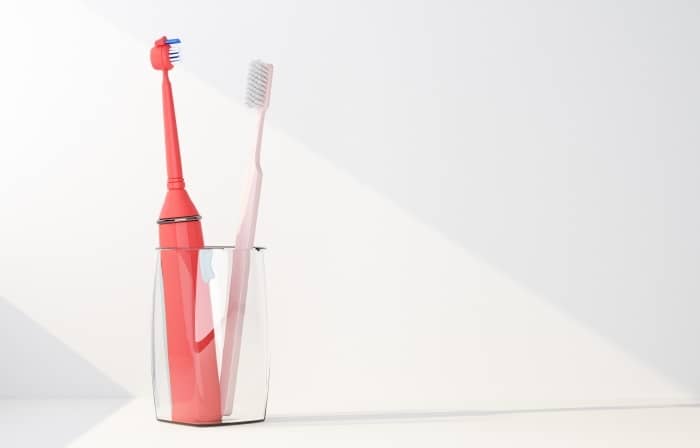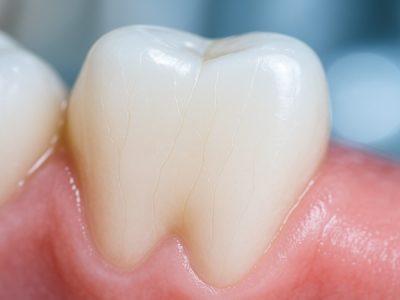“What toothbrush should I use?”
This is a great question and we are here to help you find the right toothbrush for you. Brushing your teeth twice a day is a crucial part of a good oral hygiene routine.
Here, we’ll cover tips on what to look for when choosing a toothbrush so you can find the best type for you.
Tips for Choosing the Right Toothbrush for You
The wrong toothbrush will make it difficult to clean your mouth effectively or make it harder to brush for the recommended two minutes
A toothbrush should be easy to hold, comfortable to use, and able to reach all parts of your mouth with ease.
Here are the top factors to keep in mind when choosing a toothbrush.
The Type of Bristles
Toothbrush bristles are available in soft, medium, or hard types. Almost all dentists recommend soft bristles, especially if you have enamel erosion, a tendency to use a lot of pressure when brushing, or damaged gums.
Medium or stiff bristles can damage the gums and enamel, leaving you susceptible to sensitivity, infection, and decay. Hard bristles can also cause gum recession that can lead to an exposed tooth root.
If you brush with a lot of pressure and use medium or hard bristles, your oral health may be at risk. When in doubt, ask your dentist for tips on how to brush properly and the right toothbrush for you.
When brushing, use gentle pressure and small circles to clean your teeth. It does not take much pressure to thoroughly clean the teeth and remove plaque.
The Toothbrush Handle
Your choice of a toothbrush handle comes down to comfort. Some people prefer a flexible handle as it allows them to grip and maneuver the toothbrush with ease. Look for a handle that is easy to grip and long enough for you to hold comfortably.
The Size of the Brush Head
The size of the toothbrush head affects overall comfort and how well the toothbrush can clean your teeth. In general, it is best to avoid large toothbrush heads. If a brush head is too big, it can make it difficult to clean all areas of your mouth, especially near the back.
You should only opt for a larger brush head if your dentist recommends one.
Smaller toothbrush heads can easily reach difficult areas, such as the back of the teeth. Cleaning the back teeth is especially important as this is a common area for food debris to collect and bacteria to grow.
Straight vs. Rounded Bristles
Toothbrush bristles generally come in straight or rounded shapes. The bristle shape can have a significant impact on the health of your teeth.
Straight bristles may be too rough, especially if they have jagged tips. This can damage the gums, increase inflammation, and raise your chance of experiencing an infection.
Rounded bristles help protect fragile gums while still providing an effective clean.
ADA Approval
Look for a toothbrush that is approved by the Australian Dental Association. This seal of approval ensures your toothbrush has passed strict testing, clinical trials, and safety requirements, such as safe bristle tips, durable bristles, and a sturdy handle.
Manual vs. Electric Toothbrushes — Which Is Better?
Is a manual or electric toothbrush better? We hear this question often. Here is a look at the benefits of manual and electric toothbrushes to help you decide between the two types.
Benefits of manual toothbrushes:
- Cheaper than electric toothbrushes (manual toothbrushes cost less initially and over the long run as they do not require charging, brush head replacements, batteries, etc.)
- Do not require the use of a charger
- Options for small, medium, or large brush heads
- The choice between many different bristle types
- May provide more control than an electric toothbrush since you are in control of the amount of pressure you apply to your teeth
- Maybe a better option for individuals with gum or teeth sensitivity
- More convenient to travel with as you do not need to bring a charger
Benefits of electric toothbrushes:
- Easier to use for individuals with dexterity issues or arthritis
- Some electric toothbrushes feature a built-in timer to ensure you brush for the recommended two minutes
- Can be a fun way to get kids excited about brushing their teeth
- Electric toothbrushes may help loosen plaque easier due to their powerful and consistent rotations
- Some models offer varying speeds to allow for custom control
Ultimately, the best toothbrush is the one you will use every day. Both manual and electric toothbrushes can be an effective part of a good oral hygiene routine. Choose the toothbrush that you are most likely to use and that fits your personal preference.
Related Reading: How to Choose the Best Floss
What Toothbrush Should My Child Use?
For kids, you can follow many of the same recommendations for adult toothbrushes. Again, the most important factor is finding a toothbrush your child will want to use. Find a handle that is comfortable for your child to hold and opt for soft bristles and a small toothbrush head.
Involve your child in the process of picking out a toothbrush. Some many fun designs and toothbrushes feature cartoon or movie characters. By giving your child some control in choosing their toothbrush, they will be more likely to want to use it.
For some children, an electric toothbrush can be a good way to help them be willing to brush their teeth. An electric toothbrush also does a lot of the work automatically, so it may help ensure your child’s teeth get a proper and complete cleaning.
Supervise your child’s brushing habits to ensure they are not brushing too hard and that they brush for the full two minutes. It can be helpful to sing a silly song together or use a timer. Children also pay close attention to what we do, so be sure to model good brushing habits yourself. Establishing good oral hygiene early on in your child’s life will help set the foundation for healthy teeth for the rest of their life.
How Often Should I Replace My Toothbrush?
In general, it is recommended to replace your toothbrush every three months. This applies to both manual and electric toothbrushes.
If you notice fraying or damage to the bristles on your toothbrush, you may want to consider changing it out sooner. If you have questions on how often to replace your toothbrush, we would be happy to offer personalised advice.
Do You Need Help Choosing the Right Toothbrush?
Good oral hygiene is key for supporting your overall health. The right toothbrush can ensure you stick to a good oral hygiene routine and keep your mouth and smile as healthy as possible.
Along with twice daily brushing, make sure to floss at least once a day, eat a healthy diet, and see your dentist for regular checkups.
If you have more questions about choosing the right toothbrush for you or would like personalised toothbrush recommendations, please contact us. As your trusted family Perth dentist, we are here for all your oral health needs. We are happy to help you find an effective toothbrush that you will want to use every day or get you scheduled for a consultation.







